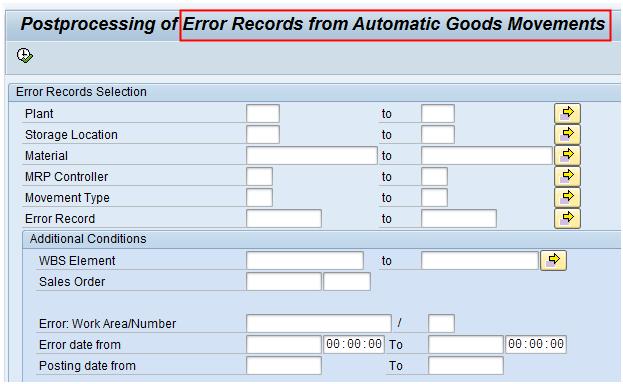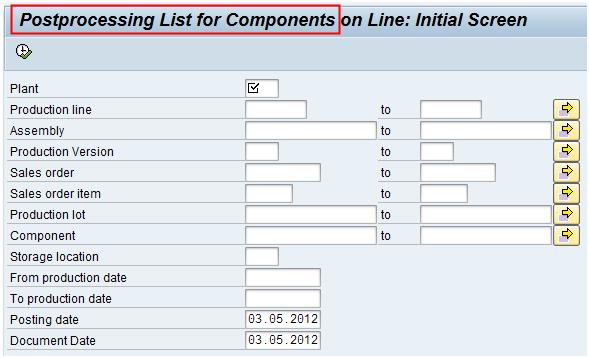Ans:
COGI transaction code used for Automatic Goods Receipts - Error handling for Backflush materials.
Backflush means: Determines whether the back flush indicator is set in the production order. Here, a 3-level hierarchical logic is applied:
1. In the routing, the backflush indicator is set in the component assignment.
2. In the material master record, the backflush indicator has the characteristic "Always backflush".
3. In the material master record, the backflush indicator has the characteristic "Work center decides", the indicator being set in the work center.
We use COGI to check & clear error record occurred during backflushing or automatic goods receipt.
When we use auto GI (Backflush) & Auto GR in production order then sometime some goods movement may will get failed due to some reasons. So at that time these failed goods movement records will be captured by system & can be viewed in COGI transaction.
You can check detailed description of error by individual record here & can reprocess it as per error.
Transaction: COGI

Q2) Difference Between COGI & MF47
I can find post process record occurring due to back flush problem such as component shortage or storage location and so on. But there was nothing when I used COGI. I checked the table AFFW for COGI, no records. What is the reason?
Ans:
To use COGI in REM Activate "Create Individual postprocessing records" check box at rem profile SPRO IMG Reference Settings.
Now you can see the Error records at COGI same as MF47.
As you know, COGI has some more features. But if you clear/delete the record at MF47, the same will be deleted/cleared at COGI also.
Transaction: MF47
